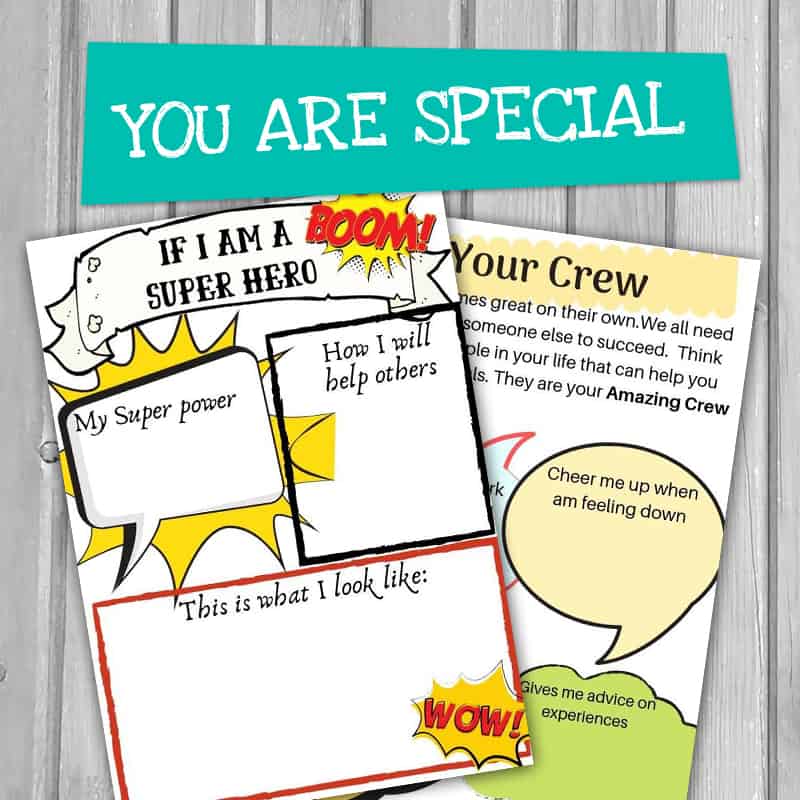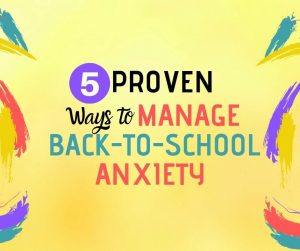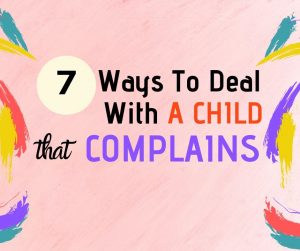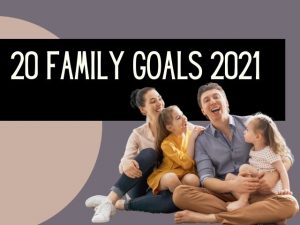Group therapy activities are usually conducted to get people to share their thoughts with other individuals in a room. It is usually a lot less intense than individual therapy.
Group counseling is conducted in a safe environment where adults or children can talk about their feelings without the fear of being judged by other participants.
Group therapy activities are becoming increasingly popular in schools and in the workplace. The popularity is expected to grow as people have been spending more time at home and are longing for social connection.
It can be very easy for adults and children to feel isolated as they spend more time in front of a screen especially during the lockdown.
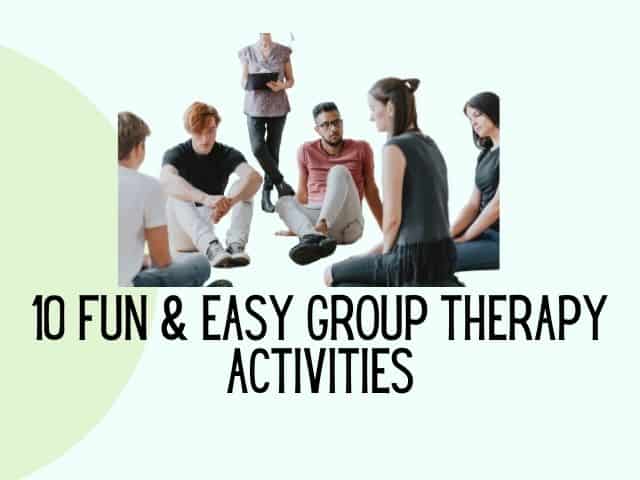
Many children turn to social media to feel socially connected with their friends. However, being socially connected is not the same as being physically connected in the same room.
Loneliness and isolation tend to happen due to the lack of connection with others.
It can be difficult for kids to express feelings like loneliness, frustration, sadness, and isolation. Especially for children in the younger age group.
Group therapy activities are meant to help kids and adults process their feelings in a larger setting. It is a great way to show children that they are not alone in their feelings.
In this blog, we will go through what is group therapy and the different type of group therapy activities that can be used by teachers and parents.
All of the group therapy activities below can also be used by adults and in the workplace.
What is group therapy?
Group therapy has been defined as :
“a form of psychotherapy that involves one or more therapists working with several people at the same time (Cherry, 2017).”
Usually group therapy is complimented with individual therapy. However, group therapy activities can also run in schools and not always trying to solve certain issues.
With children returning back to school it is useful to run group therapy activities to understand their mental health and address any anxiety they may be feeling.
Self-care group therapy activities for adults:
Here are seven self-care activities ideal for group therapy sessions:
1. Guided Meditation and Mindfulness Practices

Benefit: Guided meditation promotes relaxation, stress reduction, and improved mental clarity. The practice can also enhance self-awareness and emotional intelligence.
How to Do It: Choose a calm, quiet space where the group can sit comfortably. The group leader can guide the meditation, or you can use an online resource or app. Begin with simple, short sessions (10-15 minutes) and gradually increase the duration over time.
2. Collective Journaling
Check out the gratitude journal prompts below
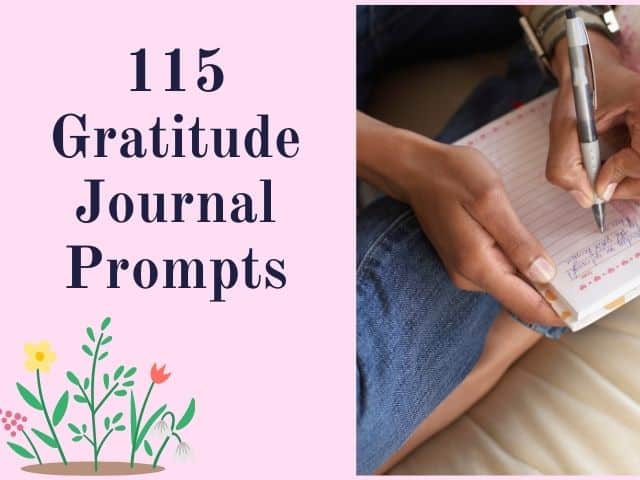
Benefit: Journaling can help individuals process emotions, identify patterns of thinking, and improve their self-awareness. It can also provide a means of articulating thoughts and feelings that might be difficult to express verbally.
How to Do It: Have each group member maintain a personal journal. Set aside some time in each session for everyone to write about their feelings, experiences, or thoughts on a given topic. Sharing entries is optional, fostering an environment of respect and privacy.
3. Art Therapy
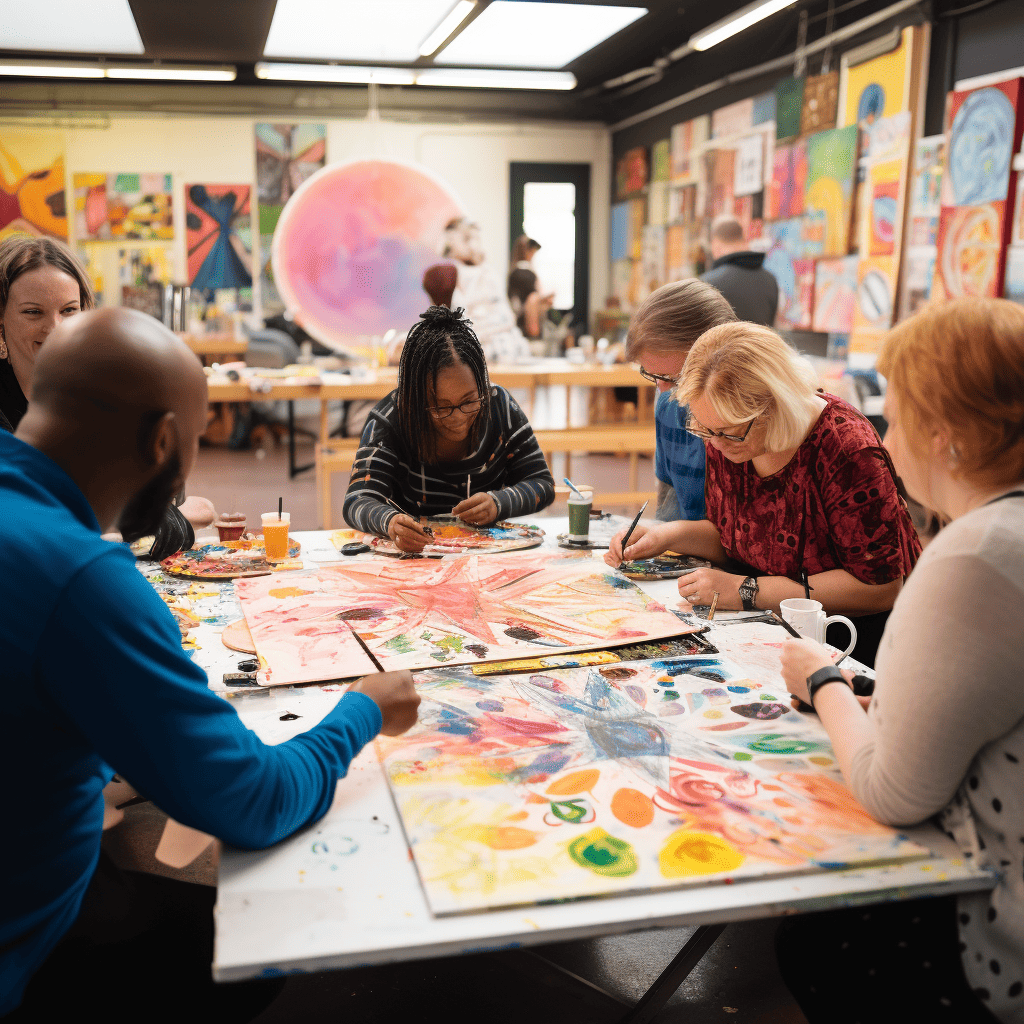
Benefit: Art therapy can provide an alternative means of expression for those who may struggle with verbal communication. It can also stimulate creativity, reduce stress, and enhance self-esteem.
How to Do It: Each session, introduce a different art form (e.g., painting, sculpting, collage making). Give a general theme for the artwork that relates to an aspect of self-care. Afterward, encourage members to share their creations and the thoughts or feelings that inspired them.
4. Yoga and Physical Movement
Benefit: Physical activities like yoga can reduce stress, improve mood, increase body awareness, and promote physical health.
How to Do It: Begin or end each session with a short yoga or stretching routine. Ensure that the movements are simple and inclusive for all fitness levels. An experienced instructor’s guidance can be beneficial.
5. Positive Affirmations
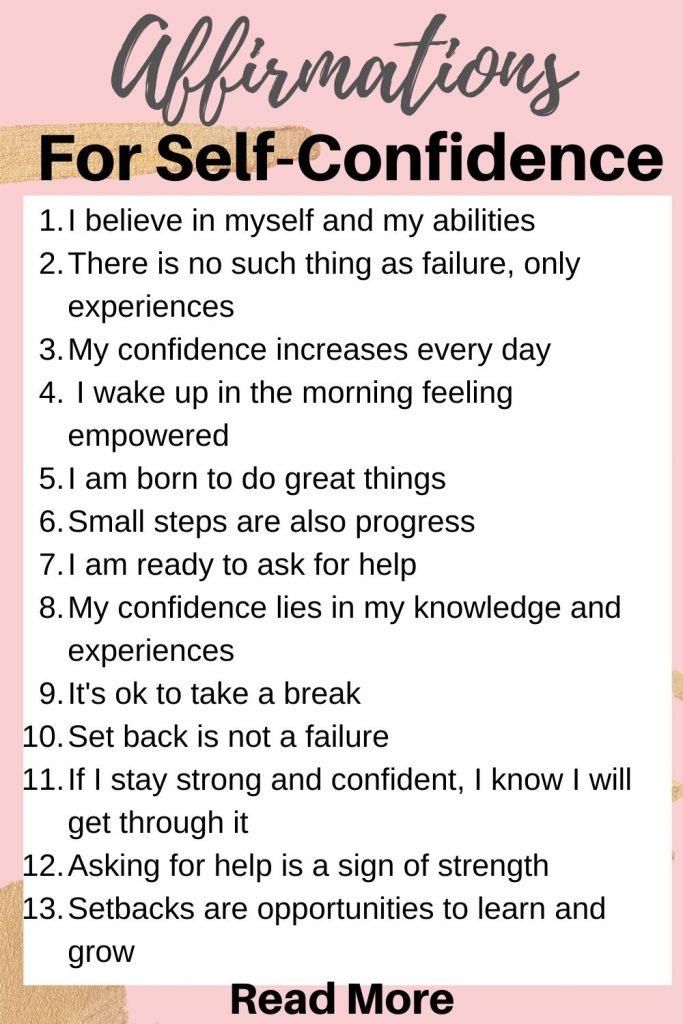
Benefit: Positive affirmations can help individuals develop a healthier, more positive self-perception and outlook on life.
How to Do It: Each session, have group members write down positive affirmations about themselves or their goals. Create a supportive environment where everyone feels comfortable sharing their affirmations aloud if they wish.
6. Self-Care Planning
Benefit: This activity encourages individuals to actively think about their self-care needs and plan for their own well-being.
How to Do It: Provide each member with a self-care planning worksheet. Discuss different aspects of self-care (physical, emotional, social, etc.), and have each member plan activities for each category. Share and discuss these plans in the group to offer support and ideas.
7. Gratitude Practice
Benefit: Cultivating gratitude can enhance positivity, reduce stress, and improve overall well-being.
How to Do It: At the end of each session, ask members to share something they are grateful for. This practice can help everyone end on a positive note, fostering a greater sense of community and mutual support.
These activities can be adapted to suit the unique needs and dynamics of any group therapy session. They promote a focus on self-care within a supportive group setting, which can be instrumental in personal growth and mental health recovery.
Outdoor group therapy activities:
The activities below not only provide therapeutic benefits but also allow individuals to connect with nature, which has been shown to have a calming effect and promote overall well-being.
1. Nature Walks and Hiking
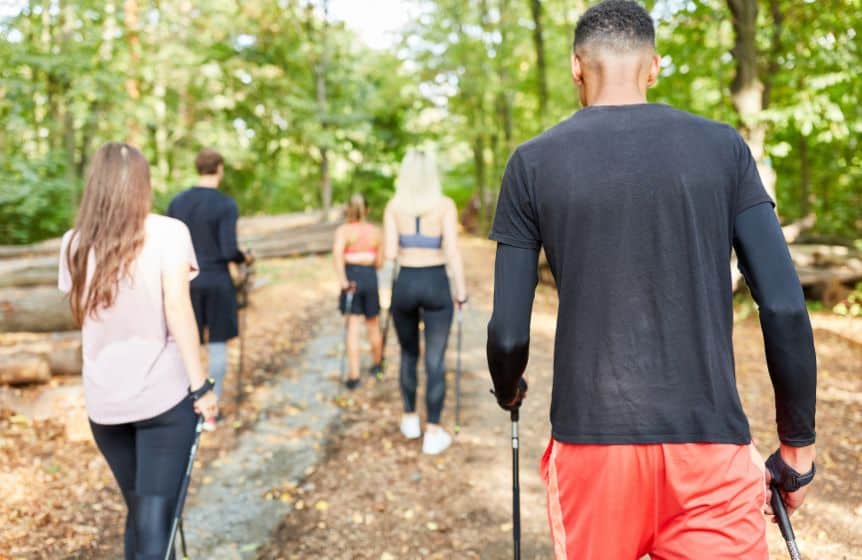
Benefit: Nature walks and hiking can provide stress relief, promote mindfulness, improve physical health, and foster a greater appreciation for the natural world.
How to Do It: Choose a safe, suitable outdoor trail. Encourage the group members to engage all their senses as they walk – noticing the sounds, smells, and sights around them. After the walk, gather to share experiences and reflections.
2. Outdoor Yoga or Tai Chi
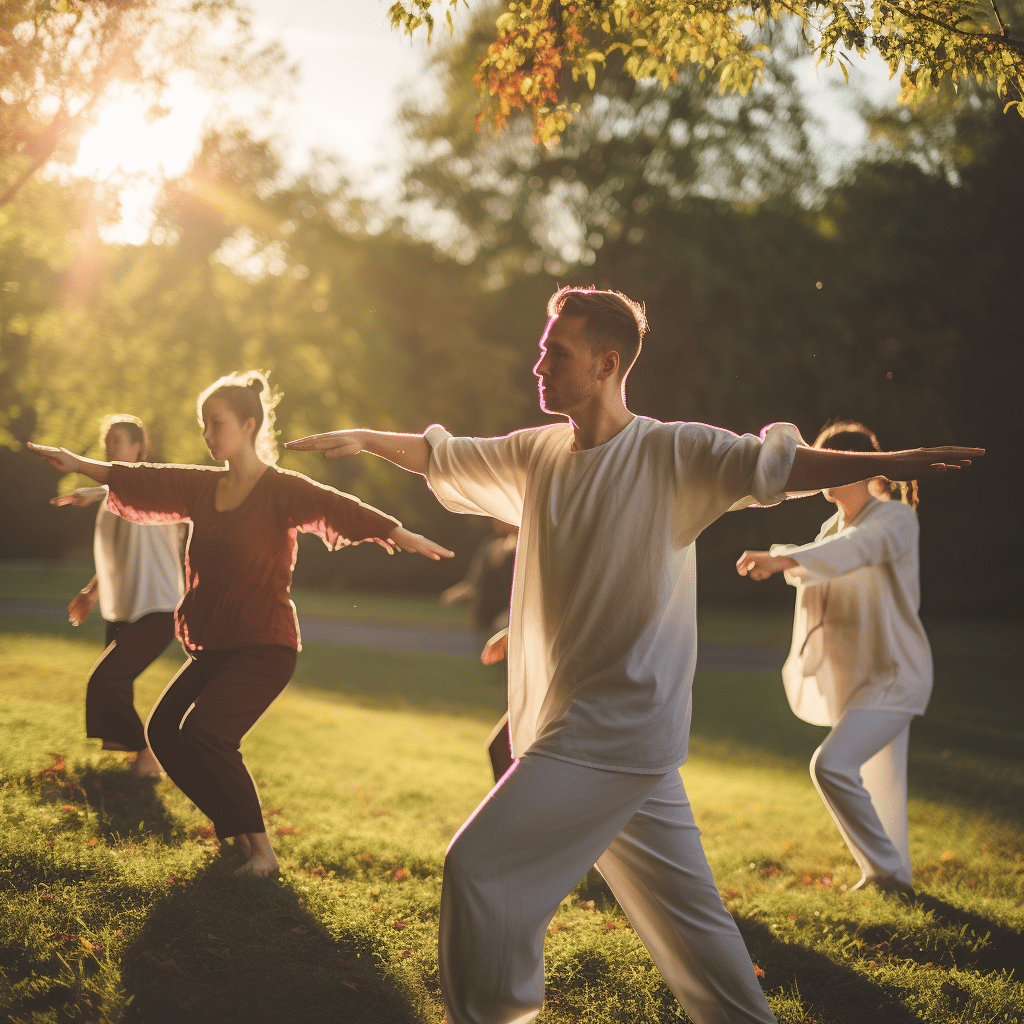
Benefit: Outdoor yoga or Tai Chi combines the benefits of physical exercise with the calming and restorative effects of nature.
How to Do It: Conduct a session in a calm, quiet outdoor space. If the group isn’t familiar with these practices, consider having a qualified instructor lead. The session should be tailored to suit all fitness levels.
3. Gardening Therapy
Benefit: Gardening can reduce stress, improve mood, promote a sense of achievement, and provide gentle physical activity.
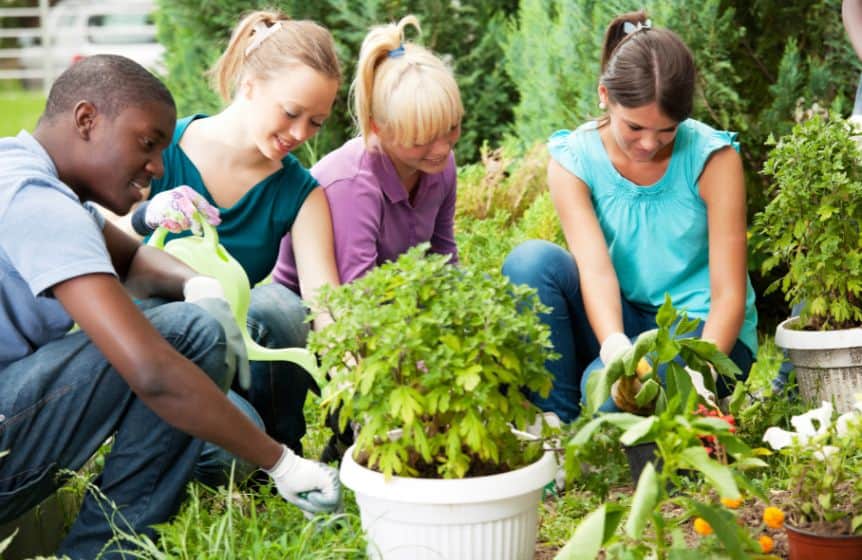
How to Do It: If a garden space is available, each group member can be responsible for a small plot or plant. Sessions can include time for gardening and discussion, relating the experiences in the garden to wider life themes.
4. Outdoor Art Therapy
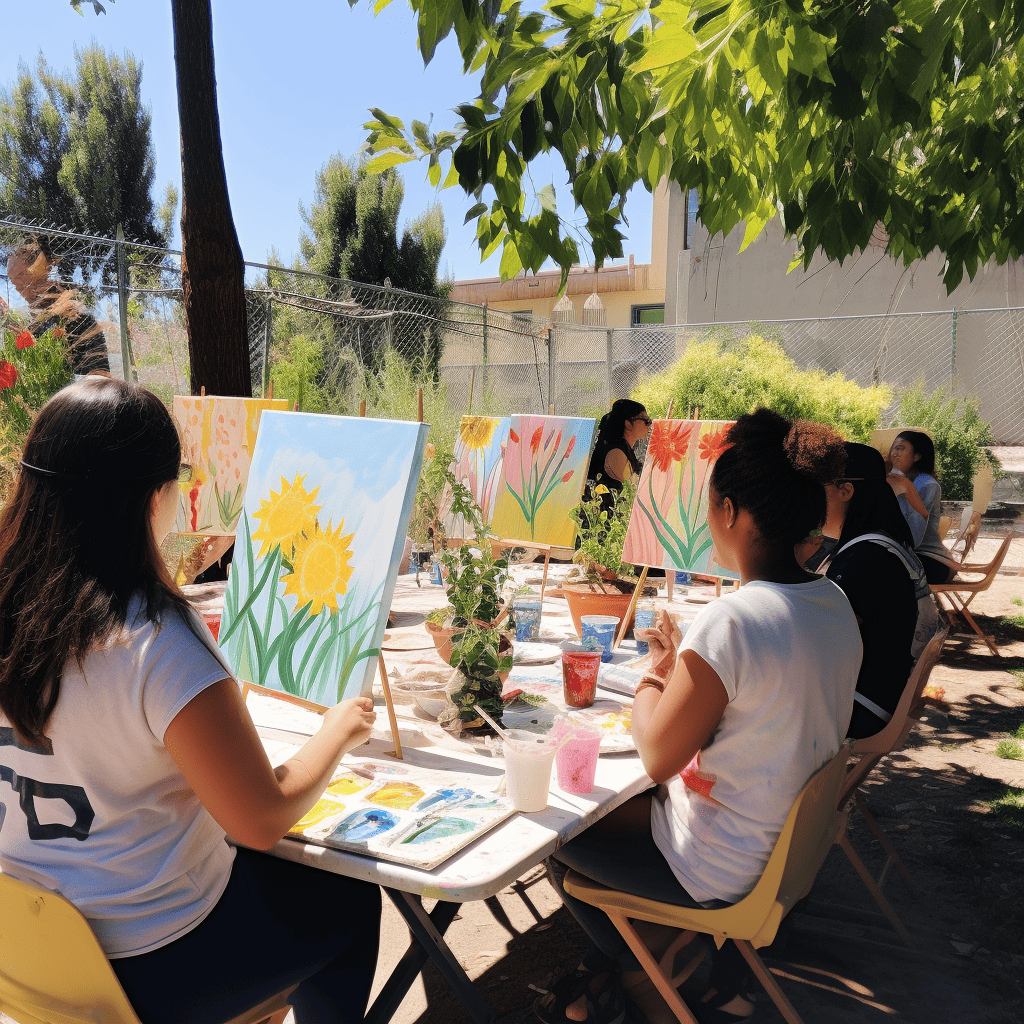
Benefit: Combining art with the outdoors can stimulate creativity, promote relaxation, and foster a sense of connection with the environment.
How to Do It: Bring art supplies outdoors and inspire the group members to create art based on their natural surroundings. This could involve painting, drawing, or even creating sculptures from found objects.
5. Ecotherapy (Nature-Based Activities)
Benefit: Ecotherapy promotes mental health through outdoor activities in nature. It can enhance mood, reduce anxiety, and provide opportunities for social connection and physical activity.
How to Do It: Ecotherapy activities can range from conservation projects, such as tree planting or beach cleanups, to nature-based crafts and games. Choose activities that are safe and suitable for all group members.
Outdoor therapy activities can be a valuable addition to a group therapy program, providing unique opportunities for healing, growth, and connection with the natural world.
Always remember to consider the capabilities, comfort levels, and interests of your group members when planning activities.
Motivational group therapy activities for students and adults :
1. Passing around the ball
This is an easy and quick game that can be played with a larger group of students or even in the class room.
Get all the students to sit in a circle then choose an object like a ball, potatoe or anything you have lying around and pass it around the circle while a music plays in the background.
When the music stops, the person holding the object will have to share what they are feeling or thinking depending on the topic that you are discussing.
2. Wall of emotions
This is a quick and easy group therapy activity.
All you need is a large piece of paper and tape it to the wall around the room.
Each paper will have a different scenario or sentence on it.
Come up with multiple sentences for participants to fill in.
For example :
1 One thing that makes brings a smile to my face…….
2. One thing I would like to change about myself….
3. One thing I would change about my family……
4. One thing I love about myself……….
Get students or participants to walk around the room and fill in their answers on the paper.
Get each students to write their answer anonymously. This will encourage them to be honest about the answer.
Discuss each answer with the group and get a general consensus on how everyone is feeling.
3. Feeling emojis
It is not surprising that students use emojis better than even using words to express their feelings.
You can use different emojis and stick them around the room or classroom. For example, sad emoji, happy emoji, angry emoji, and neutral emoji.
Then come up with different scenarios. This could either be in a form or statement or story depending on the topic of your group therapy.
Then ask students to stand up and go to the emoji that best describe their feeling about the scenario that you gave them.
You can take this further by having small group discussion around why people who chose a particular emoji feel that way about the scenario.
Get everyone back to their seat and ask students to talk about their feelings about the scenario and what made them to choose that emoji.
This is a great group therapy activity that encourages students to understand other people’s feelings and how we can all react differently to the same problem.
The scenario can be complicated or vague, depending on the topic that you choose.
Here are some examples of scenarios that you can use for this group therapy activity:
- You have to move to a new town and make new friends. How do you feel about it?
- You just found out that you were not invited to your friend’s birthday party. How do you feel about it?
- Someone said that your idea will never work. How does that make you feel?
Check out these creative writing prompts for kids
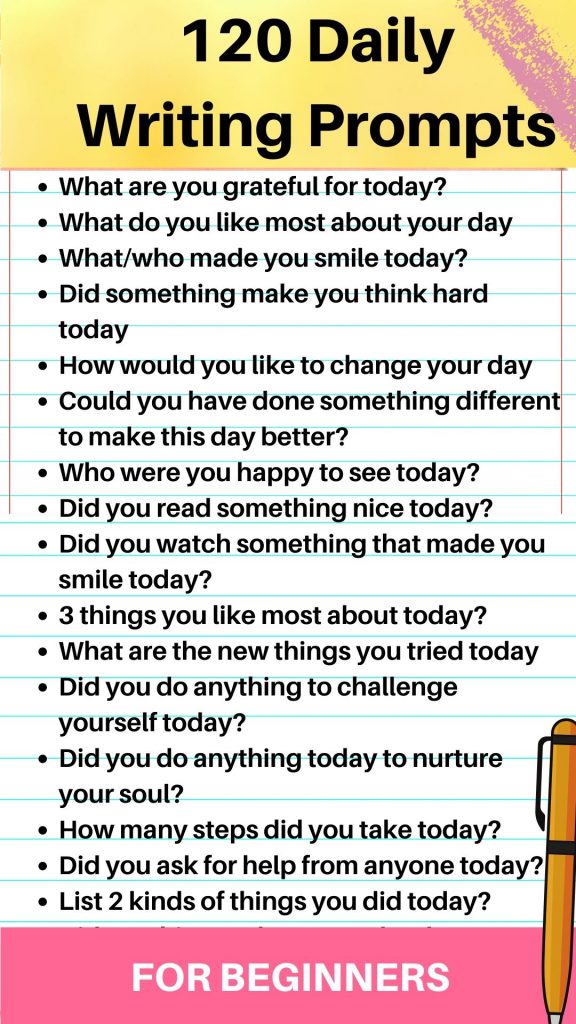
Fun & easy group therapy activities for adults and students
4. Guess who?
This is a fun group therapy activity that almost all students enjoy doing.
It is a simple game that requires just pen and paper.
Ask each student to write down a sentence on what makes them special or unique.
Do not include their name in the paper.
Then mix all the papers together. One by one read the statement and get students to guess who wrote that sentence.
This group therapy activity encourages self-reflection. It is great for improving self-esteem of students.
You can also encourage children to write what they like most about school or things that makes their family unique.
5. Remote island
This is a fun group counseling activity that encourages students to be creative and imaginative.
All you need is a piece of paper and some pens.
Get children to draw a big circle in the paper. And then set the scene of the game with them which is as follow :
Imagine you have won a trip to spend 3 months in an exotic island. You can only bring 3 things on this trip and one other person to join you for this trip.
Inside the circle draw the things you will bring and who they will bring with them.
The answers they give will surely surprise you!
Journal prompts for healing:
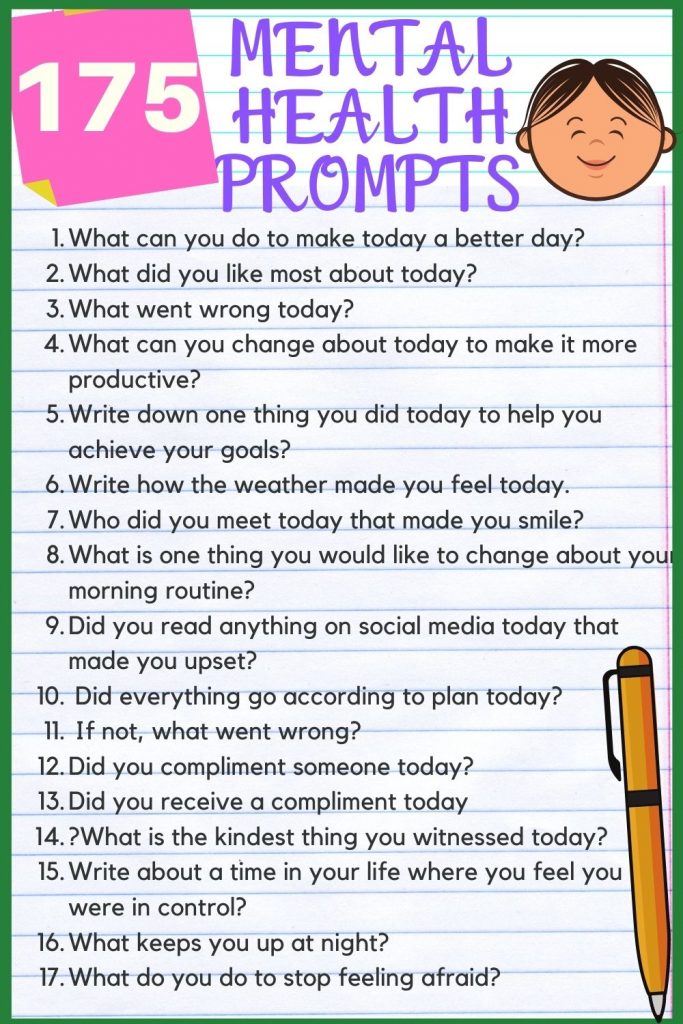
6. Musical feelings
This game is similar to musical chair except for it has a fun twist in it.
In each chair use a post it note and draw or write different feelings.
For example, bored, confuse, happy, angry, nostalgic, etc.
Arrange the chair in a circle and play some music in the background.
When the music stops students will have to sit on the chair closest to them.
Then pick on any student and ask them to share something relating to the word on the chair.
For example, if a student gets the word bored then ask them why they are feeling this way and what can they do to not feel this way.
You get the hint of the game.
7. Draw your feelings
This is a fun activity with a twist.
Rather than just drawing feelings it can be made for entertainment by asking adults or children to fill in the line “I feel____like a_____.” Fill in the blanks.
For examples, I feel happy like a duck swimming in a pond. Then ask participants to draw the sentence they made.
Get other participants to guess what is being drawn and the feelings that comes with it.
Encourage everyone in the group to use as many colors and be as detailed as they can be with the drawing.
8. Make a song or poetry
Get everyone in the group to write down in a piece of paper one sentence about their most recent experience or memory.
Collect all the paper and then get all the participants to create a poem or song out of it.
While doing this activity encourage participants to talk about what is written on the paper and how the person must be feeling.
Group therapy activities & games for kids:
9. Stand or sit
This is a simple and easy game that all kids love. Prepare a number of statements, for exmple “I love myself”, “I love my life”, etc. If a student feels the statement is true they remain standing and if they feel the statement does not resonate with them they can sit down.
If everyone is standing for a particular statement then reward them by having allowing them to give each other hugs or a dancing party.
This is a nice class activity as everyone is truly involved. Also, a good way of knowing what their friends are actually feeling.
Dont forget….THE GROWTH MINDSET KIT to encourage children to share kindness with others
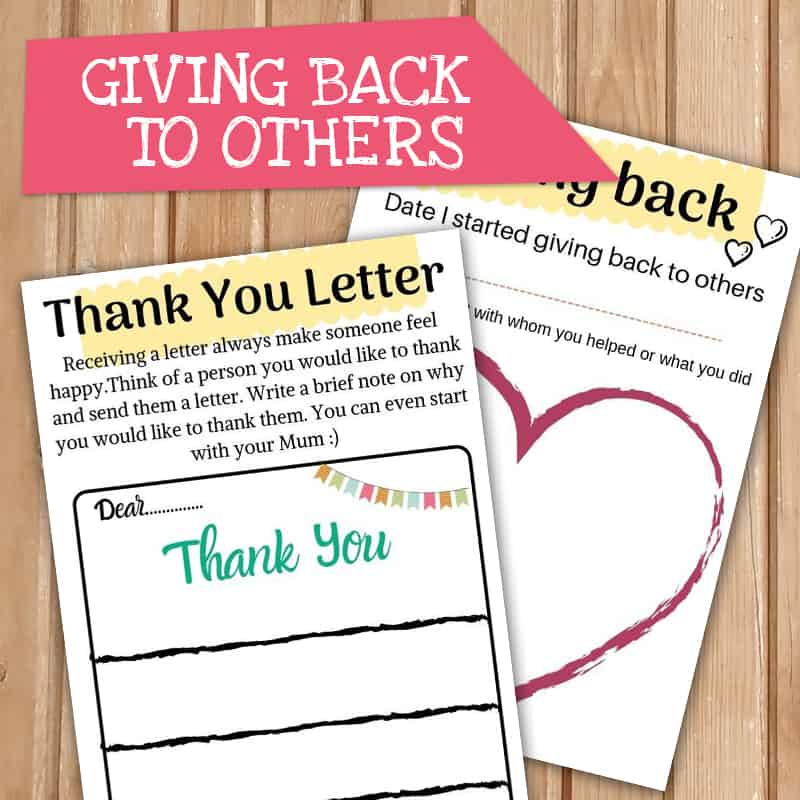
10. Shoot the ball
This is a great group therapy activities for kids and adults.
The game is very simple. All you need is to have a trash can and papers crumpled into a ball.
Ask each student to take turn to throw the paper into the trash can.
If the person misses they will have to answer a question. If the student goals into the trash can then they can skip a question.
You can decide the questions for students to answer. Here are some simple question :
- What do you like most about your friends?
- What do you like most about your school?
- What is the hardest thing you have to do as a student?
11. Fear in a bowl
Get everyone to write down their biggest fear in a piece of paper.
Then mix all of the answers into a bowl.
Each participant picks up a paper and reads out the fear.
Have a discussion around each fear. For example, what can the person do to overcome that fear.
This is even a great ice breaker games that encourages people to talk about feelings and emotions.
Interactive group therapy activities
1.Role-Playing
Benefit: Role-playing can help individuals learn new behaviors, improve their communication skills, and better understand others’ perspectives.
How to Do It: Choose a scenario relevant to the group’s common issues. Assign roles to participants and let them act out the scenario. After the role-play, discuss the experience and feelings that arose during the activity.
2. Trust-Building Exercises
Benefit: Trust-building exercises can enhance group cohesion, empathy, and mutual understanding, crucial aspects of a supportive group environment.
How to Do It: Activities such as “trust falls” or “minefield” (navigating through a space with obstacles while blindfolded, guided by a teammate) can be excellent trust-building exercises.
3. Therapeutic Board Games
Benefit: Therapeutic board games can stimulate conversation, promote emotional expression, and encourage cooperation and problem-solving.
How to Do It: Use commercially available therapeutic board games or create your own. The game should involve discussion prompts related to the group’s therapy goals. Encourage open and respectful conversation during the game.
4. Group Problem-Solving
Benefit: This activity can enhance group cooperation, communication, and problem-solving skills. It also helps individuals to see that they are not alone and that others may have similar struggles.
How to Do It: Present the group with a hypothetical problem related to common issues they face. As a group, they should discuss possible solutions and work towards a consensus.
5. Shared Cooking or Meal Planning Activities
Benefit: This activity can promote teamwork, healthy lifestyle choices, and even address food-related issues.
How to Do It: As a group, choose a healthy recipe, plan the meal, shop for ingredients (if possible), and cook together. Discuss the importance of nutrition and its impact on mental and physical health.
6. Emotional Charades
Benefit: Emotional charades can help participants become more comfortable with expressing and identifying emotions.
How to Do It: Similar to traditional charades, but instead of films or books, participants act out specific emotions or scenarios involving certain feelings. After each round, the group discusses the emotions presented.
7. “Two Truths and a Lie”
Benefit: This game can help build group cohesion, stimulate conversation, and promote better understanding among group members.
How to Do It: Each participant tells the group two true things about themselves and one lie. The rest of the group has to guess which statement is the lie. This activity can lead to deeper discussions and increased familiarity among group members.
Remember, every group is unique, and each activity should be chosen with careful consideration of the group’s dynamics, the individuals’ comfort levels, and the therapy goals.
Always create a safe, supportive, and respectful environment in which each member feels heard and valued.
Adolescent group therapy activities
1. Music Therapy

Benefit: Music therapy can help adolescents express emotions they might find hard to put into words, increase self-esteem, reduce anxiety, and promote positive mood.
How to Do It: Encourage adolescents to bring their favorite songs and share why they connect with them. Alternatively, group members can collaborate to create a group song or use instruments to express their feelings non-verbally.
2. Image and Metaphor Exercise
Benefit: This activity can enhance creativity and self-expression, encourage emotional exploration, and facilitate communication.
How to Do It: Provide magazines, scissors, and glue. Ask group members to create a collage that represents their feelings or life experiences. Afterward, encourage them to share and discuss their collages, delving into the metaphors they’ve used.
3. Team Sports or Games
Benefit: Group sports or games can foster teamwork, promote physical activity, and improve mood. They also provide opportunities for learning about cooperation, leadership, and healthy competition.
How to Do It: Organize a simple and inclusive game like kickball, volleyball, or a relay race. Make sure the focus remains on fun and cooperation, not solely on winning.
4. Social Skills Role-Play
Benefit: Role-play can help adolescents develop social skills, empathy, and understand others’ perspectives. It can also allow them to practice managing challenging social situations.
How to Do It: Create scenarios that involve common social challenges for adolescents. Split the group into pairs or small groups and have them role-play the scenarios. Afterward, discuss the outcomes and alternative ways of handling the situation.
5. Strengths and Goals Mapping
Benefit: This activity can promote self-awareness, boost self-esteem, and help adolescents plan for the future. It also provides an opportunity for the group to share and support each other’s aspirations.
How to Do It: Give each participant a large piece of paper and markers. Have them draw a map or timeline representing their strengths, achievements, and future goals. Encourage them to share their maps with the group if they feel comfortable.
Advantages of group therapy activities:
There are many advantages to getting people talking in a group. Here are some benefits :
1. Safe space :
Close friends or family can be the right people to help understand your condition. They know you best. Having them involved in activities will help you overcome any struggle you may be feeling.
2. Less intense :
Individual therapy can be very intense for some people. Especially for those that are new to therapy. Having everyone sit in a circle and discuss their feelings can remove the anxiety people tend to feel about therapy.
3. Cheaper than individual therapy
Paying for a therapist can be expensive.Group therapies is a cost-effective alternative.
Especially in schools with limited budget that cannot afford a therapist, this can be a great activity that can be conducted by teachers.
You can check the Growth Mindset Kit designed to raise confident kids growing up with tech
4. Removing stigma
Many people attach stigma relating to therapy. By having it in a group setting that stigma is removed and issues like mental health and other sensitive topic can be discusses openly.
This is particularly importance in a school setting to introduce the topic of mental health to children.
Getting all students to understand what their peers might be facing and helping them to get through it.
How to get children & adults engage in group therapy activities?
Group therapy activities should be conduced in a relaxed and safe environment.
It is best to create a nice atmostphere in the room. For example, by having a soft music playing at the background.
Get students to sit in a circle as this will encourage face to face interaction and discussion.
If the session is conducted in the classroom then move all the tables and chair to the side of the room.
Get students to sit on the floor and in a circle.
The reason is that children should feel like that they are not being judged.
Talk about some rules to be followed by all the participants. For examples, not passing judgements and being supportive to each other.
Conclusion
We hope you have enjoyed the group therapy activities in this blog.
If a child or an adult does not want to participate in the activity then do not force them.
It can take time for some people to open up about their feelings.
Group therapy activities are meant to be fun and should not feel forced upon anyone.
Let us know which is your favourite activity.
don’t forget to check out the PERSONALISED growth-mindset kit you can use at home
Was this helpful?
Good job! Please give your positive feedback
How could we improve this post? Please Help us.

